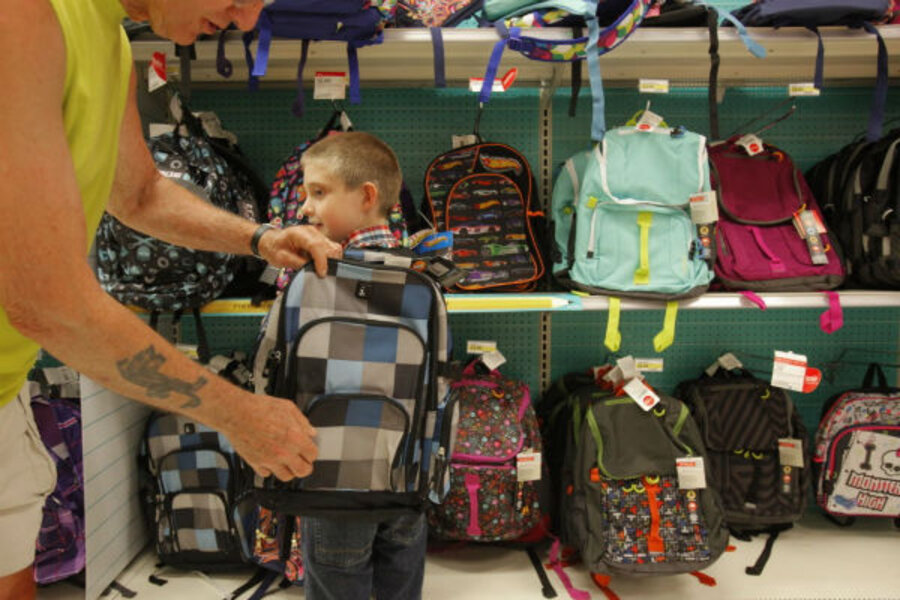Back-to-school stats: How much do Americans spend shopping?
Loading...
We’ve been keeping an eye on all the facts and figures coming out about the great Back To School migration. (Was that really $700 that the National Retail Federation said was the average cost of back-to-school spending for kindergarten through 12th grade?) After all, this is a big time of year for parents and their kids, whether they’re dreading the end of lazy summer days or counting down the minutes until someone else will help entertain (I mean teach) Junior for a good chunk of the day.
So when we saw a new collection of back-to-school stats from the US Census Bureau, we decided we needed to share.
Because check this out: The amount of money spent at family clothing stores in August 2011? $7.7 billion. Yes, billion. And this consumerism could take place at a wide variety of locations. According to the Census Bureau, there were 28,520 family clothing stores in 2009, along with 7,092 children and infants clothing stores, and 26,651 shoe stores.
But don’t forget the books. August is the strongest sales month of the year for bookstores (flashback here of making my way through the maze of paperback piles at the campus book shop) with purchases totaling some $2.4 billion. And you can get your copy of "The Catcher in the Rye" at some 9,390 bookstores nationwide (as of 2009).
All of this might seem crazy until one considers another stat: More than a quarter of the population age 3 and older is enrolled in school. Sixteen percent of college students are 35 and older, and 72 percent of children aged 3 to 6 are enrolled in full-day kindergarten. All together, that’s 79 million people as of 2010 who are heading back to school – a lot of demand for textbooks and color-coded binders. (Do kids still use binders? Or is everything on an iPad? Help me out here.)
But if this all has you aghast, the Census Bureau also reminds us that staying in school is worth it financially. Although this figure has been sliced and diced, and ends up being more complicated than it might appear (sorry, but humanities graduates just don’t make as much as the engineers), workers with a bachelor’s degree had median earnings of $56,000, compared to the $33,000 of those with a high school diploma. Workers with less than a high school diploma had median earnings of $25,000.
So go forth and shop for back to school. It is, apparently, the American way.






